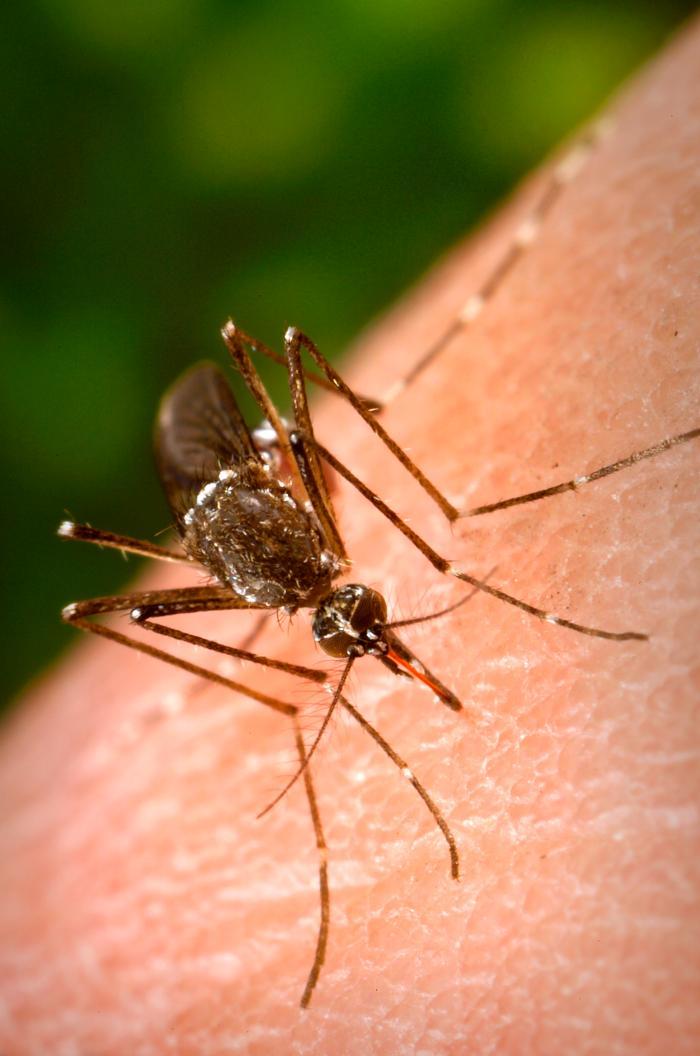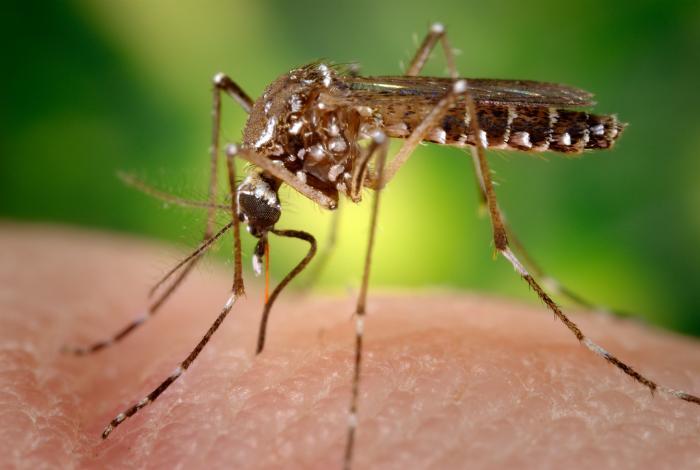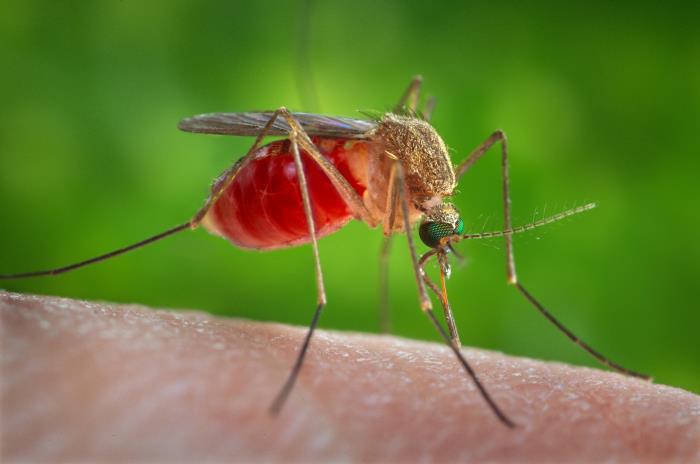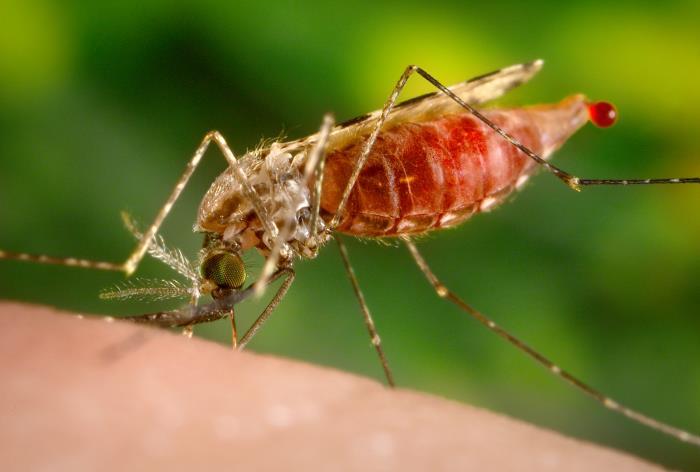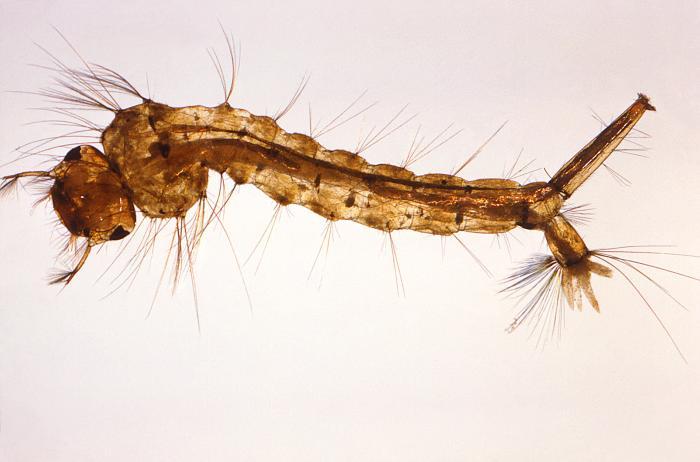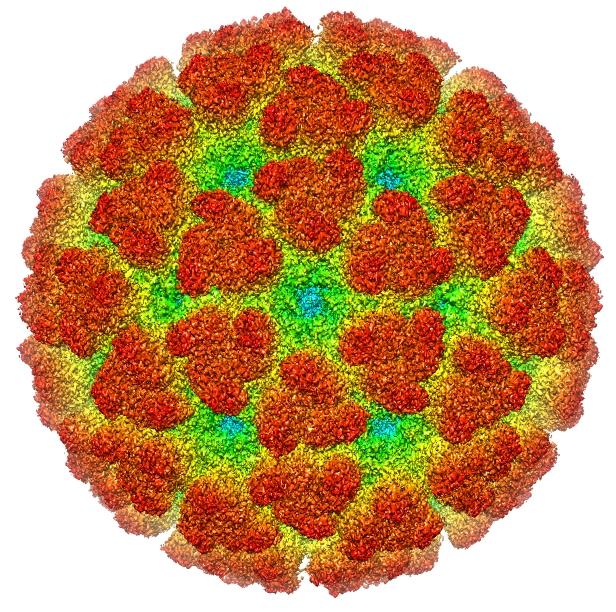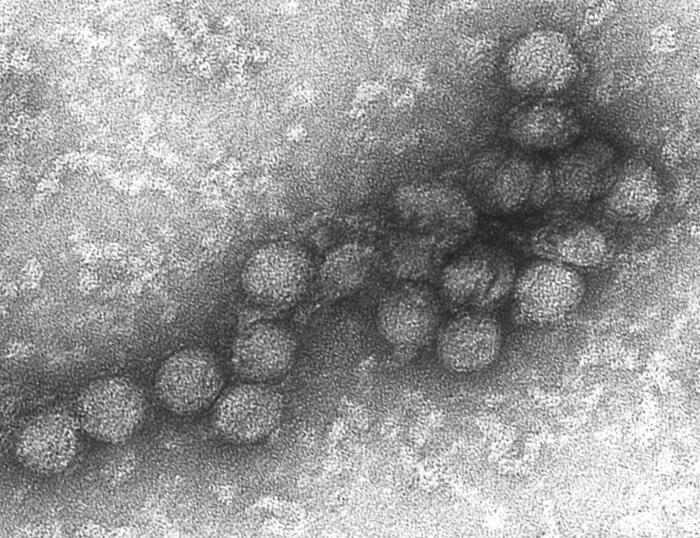Mosquito-borne diseases are those that are transmitted to people through the bite of an infected mosquito.
The diseases spread by mosquitoes can be caused by a parasite, as in the case of malaria, or by viruses, as is the case for Zika fever and numerous others.
Some of these agents, like the parasite that causes malaria, have produced illness in humans for thousands of years, while others such as the chikungunya and Zika viruses have emerged only very recently.
Factors such as urbanization, global travel, and human population growth have increased the potential for mosquitoes to proliferate and hence cause disease on a wider scale.
Mosquito Species
The mosquito, whose name comes from the Spanish for “small fly”, is a type of insect that belongs to the family Culicidae. There are thousands of species of mosquitoes, but a distinguishing characteristic is that the female possesses a tube-like mouthpart, called a proboscis, which pierces the skin of the host to draw blood. Female mosquitoes require the nutrients (mainly vitamins) in blood to produce eggs.
Mosquitoes feed primarily on vertebrates including humans and other mammals, as well as birds, reptiles, and others. Most species have a preference for either humans or certain animals as the source of their blood meal. They are attracted by body odors, carbon dioxide, and heat emitted by person or animal. Most mosquitoes prefer biting at certain hours such as dusk or dawn. Different species also vary in their preferred places to feed or rest; some prefer natural vegetative habitats, while others favor urban environments particularly trash or receptacles in yards.
While obtaining a blood meal from a host, the female mosquito injects some of its own saliva into the skin. The saliva contains anticoagulants and anti-inflammation substances that prevent the host’s blood from clotting so that the proboscis does not become trapped in the host. Upon detecting a foreign substance, the immune system of the host releases histamine and cytokines, substances that cause the itching and wheals associated with mosquito bites.
Although the itching can be very irritating, the much more serious risk from mosquitoes is their ability to serve as vectors, or carriers, for a number of diseases, including Zika virus, dengue, West Nile, yellow fever, and malaria, among many others. The disease-causing viruses and parasites are carried by specific species of mosquitoes. The most prominent mosquito-borne diseases are transmitted by three genera of mosquitoes – Aedes, Culex, and Anopheles.
Aedes
The Aedes mosquitoes are the carriers of many viral diseases including Zika, dengue, chikungunya, yellow fever, and Rift Valley disease.
The Aedes mosquitoes can be identified by the distinctive black and white markings on their bodies and legs. Unlike most other mosquitoes, Aedes mosquitoes are active and bite only during the daytime, with peak activity during the early morning and in the evening before dusk.
There are two specific species of Aedes that are important transmitters of viruses – Aedes aegypti and Aedes albopictus. Aedes aegypti, also known as the yellow fever mosquito, is found in urban areas, is active both indoors and outdoors, and has a preference for humans as the source of its blood meal. Aedes albopictus, commonly referred to as the Asian tiger mosquito, is mostly associated with areas of vegetation and is found primarily outdoors; the female will bite domestic and wild animals, as well as humans.
Because the Aedes aegypti mosquitoes live near and prefer to feed on people, they are more likely to spread viral diseases than are the Aedes albopictus mosquitoes.
Although the range of the two species of mosquitoes was originally confined to localized tropical and subtropical regions - Aedes aegypti in Africa and Aedes albopictus in Southeast Asia - they are both now distributed in tropical and subtropical areas worldwide. In the United States, Aedes aegypti is found in the more southern states, while Aedes albopictus can survive colder temperatures and is found further to the north.
Maps showing the estimated potential range (but not the disease risk) of Aedes mosquitoes in the United States in 2017.
Culex
Culex, a large group of mosquitoes also known as common house mosquitoes, are the principal vectors that spread the viruses that cause West Nile fever, St. Louis encephalitis, and Japanese encephalitis, as well as viral diseases of birds and horses. Culex mosquitoes can also transmit the parasitic disease lymphatic filariasis and the bacterial disease tularemia.
Culex mosquitoes are distributed worldwide in tropical and temperate regions, with the exception of extreme northern latitudes. They feed at night on humans and animals and are found indoors and outdoors.
Anopheles
Anopheles mosquitoes are best known for spreading malaria, although they can transmit other diseases. They are active between sunrise and sunset, and can be found both indoors and outdoors. The females feed on both humans and animals, but some species have a preference for one over the other; species that favor humans pose the greatest risk for transmitting malaria.
Mosquito Life Cycle
There are four distinct stages in the life cycle of a mosquito – egg, larva, pupa, and adult. The mosquito has a different appearance at each stage. The entire cycle generally takes one to two weeks, but the time can vary depending on the species and environmental conditions such as temperature.
The adult female can produce eggs at intervals throughout her life, but she requires proteins from a blood meal in order for the eggs to develop. Depending on the species of mosquito, the female lays between 30 and 300 eggs at a time; the Aedes mosquito, for example, generally lays 100 eggs at a time.
Many mosquitoes deposit their eggs directly on the surface of water, either singly (Anopheles) or clumped into rafts (Culex); others lay their eggs above the waterline, often in manmade containers (Aedes).
The water level must rise, as a result of rainfall or other means, to cover the eggs before the larva can hatch. The larvae feed on microorganisms in the water and go through a series of stages in which they molt and enlarge. At the end of this period, the larva changes into a comma-shaped pupa. The pupa does not feed and spends most of its time at the surface of the water.
When the pupa has matured, the pupal skin splits and a fully developed adult mosquito emerges. Adult mosquitoes feed mostly on flower nectar, but the females need to acquire a blood meal to continue the replication cycle.
If the female bites a person who is infected with Zika virus or another virus, the mosquito will pick up the virus. The virus reproduces within the mosquito for a certain period of time in which the virus migrates from the mosquito’s gut through the circulatory system to the salivary gland. Then, the mosquito can pass the virus to another person during a subsequent bite.
It is thought that warmer climates and denser population centers provide mosquitoes with greater availability to habitats in which they prefer to live and breed, especially for those species such as the Aedes mosquitoes that have adapted to human environments. Not only has the geographic range of mosquitoes expanded, but within urban areas there are more numerous sites containing standing water - such as buckets, flower pots, and old tires - that mosquitoes require to complete their life cycle.
These favorable settings accelerate the progression of mosquitoes through their life cycle, as well as shortening the incubation period within the mosquitoes that viruses need to reproduce.
Viral Diseases Transmitted by Mosquitoes
Many diseases caused by viruses and other types of microorganisms are spread to humans and animals by mosquitoes. A brief description of some important mosquito-borne viral diseases affecting humans is given here. A more in-depth description for some of them is found on the linked pages.
Chikungunya
Chikungunya virus causes a disease that, while rarely fatal, can cause debilitating joint pain that can last for weeks. Typical symptoms include fever and rash, as well as pain.
The virus, which is classified as an alphavirus, is similar to dengue virus. The two viruses produce many of the same symptoms and both are carried by the Aedes mosquitoes, primarily Aedes aegypti.
The chikungunya virus originated in tropical regions of Africa. It then spread east into Asia and north into Europe. The first reports of chikungunya in the Americas occurred in 2013 when the virus emerged in the Caribbean and rapidly expanded into Central America, South America, and North America. Chikungunya has now been identified in over 60 countries in Asia, Africa, Europe, and the Americas.
By 2016 there were more than 1.7 million suspected cases of infection in the Americas. The virus is not spreading within the United States at this time, but there have been close to 800 cases of individuals in 44 states contracting the virus while traveling in areas where chikungunya was present in the local mosquito populations.
Dengue
Dengue virus causes dengue fever, a disease characterized by high fever, headache, joint pain, and rash. A more severe form, dengue hemorrhagic fever, can include bleeding and breathing difficulty and is fatal in some cases.
There are four types of dengue virus, and they belong to a class of viruses known as flaviviruses – the family that also includes the West Nile, yellow fever, and Zika viruses. Dengue, transmitted predominantly by Aedes aegypti mosquitoes, is found in more than 100 countries.
Dengue is the most common vector-borne viral disease in the world, causing an estimated 50 to 100 million infections globally each year and 25,000 deaths. In the tropics and subtropics, it is a leading cause of illness and death.
The incidence of dengue has jumped sharply in recent decades as the disease has spread into new geographic regions. While still rare in the United States, the frequency of dengue infection is on the rise and is largely associated with travel to regions in which dengue is circulating, but some cases have been acquired locally.
West Nile
West Nile virus was first isolated in the West Nile district of Uganda in 1937 and spread to many other countries in Africa, Europe, Asia and the Middle East. A strain of the virus circulating in Israel and Tunisia was imported into New York in 1999 and produced a large outbreak that spread throughout the entire continental United States in subsequent years. Today, West Nile virus is widely established in the Americas.
West Nile virus can cause death in humans and different bird species. Most people (80%) do not develop any symptoms. Most of the remaining individuals who become infected develop West Nile fever, which is associated with fevers, aches, and nausea. A small percentage (about 1 in 150 infected persons) develops West Nile encephalitis, a more serious disease that produces high fever, neck stiffness, convulsions, muscle weakness, paralysis, and possibly death.
West Nile virus belongs to the flavivirus family of viruses. It is transmitted principally by Culex mosquitoes. Birds are the reservoir for the virus and mosquitoes acquire the virus when they feed on infected birds. Depending on the strain of the virus and the species of bird, the virus may or may not kill the bird. The strain circulating in the United States is very pathogenic for birds, particularly crows, and the appearance of dead birds can serve as a warning for the presence of West Nile virus.
After feeding on an infected bird, the virus circulates in the blood of the mosquito for a few days until it reaches the salivary gland. When next the mosquito takes a blood meal from a person, the virus is injected and can cause illness in the bitten individual. Horses can also become infected with West Nile virus, but like humans and unlike birds, horses do not spread the disease.
West Nile
West Nile virus was first isolated in the West Nile district of Uganda in 1937 and spread to many other countries in Africa, Europe, Asia and the Middle East. A strain of the virus circulating in Israel and Tunisia was imported into New York in 1999 and produced a large outbreak that spread throughout the entire continental United States in subsequent years. Today, West Nile virus is widely established in the Americas.
West Nile virus can cause death in humans and different bird species. Most people (80%) do not develop any symptoms. Most of the remaining individuals who become infected develop West Nile fever, which is associated with fevers, aches, and nausea. A small percentage (about 1 in 150 infected persons) develops West Nile encephalitis, a more serious disease that produces high fever, neck stiffness, convulsions, muscle weakness, paralysis, and possibly death.
West Nile virus belongs to the flavivirus family of viruses. It is transmitted principally by Culex mosquitoes. Birds are the reservoir for the virus and mosquitoes acquire the virus when they feed on infected birds. Depending on the strain of the virus and the species of bird, the virus may or may not kill the bird. The strain circulating in the United States is very pathogenic for birds, particularly crows, and the appearance of dead birds can serve as a warning for the presence of West Nile virus.
After feeding on an infected bird, the virus circulates in the blood of the mosquito for a few days until it reaches the salivary gland. When next the mosquito takes a blood meal from a person, the virus is injected and can cause illness in the bitten individual. Horses can also become infected with West Nile virus, but like humans and unlike birds, horses do not spread the disease.
Yellow Fever
Yellow fever virus most commonly causes fever, headache, muscle pain, and nausea in those individuals who develop symptoms (many do not); these symptoms can initially be mistaken for malaria. However, a small percentage of symptomatic patients enter a more severe phase where they experience bleeding from the mouth, nose, and eyes and jaundice, a condition affecting the liver and kidneys that produces the yellowing of the skin and eyes for which the virus is named. For about half of the people who progress to this second phase, the disease will lead to death.
The virus, classified as a flavivirus, is generally transmitted by Aedes aegypti mosquitoes, the reason that these mosquitoes are also known as yellow fever mosquitoes.
While no longer a threat in the United States (although in the past it has caused devastating outbreaks), yellow fever is endemic in many countries in Africa and Central and South America. The greatest risk for a yellow fever outbreak occurs when the virus is introduced into heavily populated areas with high mosquito densities where the human population has little or no immunity, as is occurring currently in Africa.
An outbreak of yellow fever was detected in the capital of Angola in December 2015 that has since spread to other regions within Angola and to the neighboring Democratic Republic of Congo. As of June 2016, there have been nearly 1000 cases confirmed in these two countries (mostly in Angola), with many more suspected, and over 300 people have died. A separate outbreak was reported in Brazil in January of 2017.
Unlike many other mosquito-borne viruses, a safe and effective vaccine exists to safeguard against yellow fever. The challenge is to vaccinate people in the affected regions swiftly enough to contain the spread and to maintain sufficient stockpiles of the vaccine so that enough is available during an outbreak; it takes about 12 months to produce additional doses.
Zika
 Credit
Credit
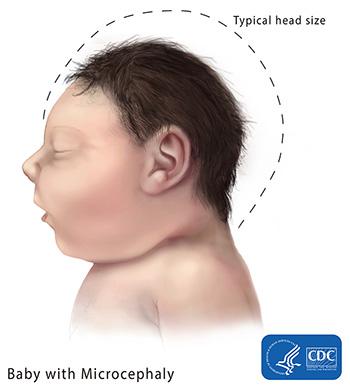
Zika virus, the most recent of these mosquito-borne viruses to emerge, causes no symptoms or only a mild disease that may involve fever, rash, and joint pain in most people who become infected. However, the disease can cause severe neurological defects in the developing fetuses of pregnant women who are infected with Zika virus. A significant number of the babies of these women are born with microcephaly, a rare disorder in which a baby’s head is much smaller than normal. This defect can lead to developmental problems ranging from mild to severe and is sometimes fatal.
Zika virus is classified as a Flavivirus and is transmitted principally by the Aedes aegypti mosquito.
Zika was an obscure virus that was not associated with serious disease until it emerged explosively in Brazil in 2015 and spread rapidly throughout Latin America. Because Zika virus had not been found in the Americas previously, there was no immunity to the virus in the population and nearly everyone was susceptible.
Since its outbreak, Zika has spread geographically to regions that provide favorable conditions for the transmitting mosquitoes. These areas include parts of Central and South America, the Caribbean, Africa, Asia, and the Pacific Islands. Within the United States, Zika has been spread by mosquitoes locally in the states of Florida and Texas.
Mosquito Control and Disease Prevention
The best way to avoid a mosquito-borne disease is to prevent the bite of a mosquito. There are no anti-viral drugs to treat these diseases, and with the exception of yellow fever, there are no effective vaccines to prevent them.
To prevent mosquito bites in the home, use air conditioning or screened windows and doors, or if not available, mosquito netting over beds. Remove standing water from containers around the house and yard to reduce mosquito breeding areas.
When out of doors, it is best to use an insect repellent containing DEET or another active substance, following the usage instructions. Additionally, skin exposure should be minimized by wearing long sleeves and pants.
These precautions should be adhered to especially in areas where infected mosquitoes are circulating. Due to the serious risk of microcephaly and other neurological defects, pregnant women are advised to avoid traveling to regions where Zika virus is spreading. Women expecting to become pregnant and their male partners who plan travel to these regions should consult with their doctors and follow strict measures to avoid mosquito bites.
For More Information
- Information about mosquito and other vector-borne diseases from the WHO
- Life cycle of the Aedes aegypti mosquito
- Maps of the estimated range of Aedes mosquitoes in the United States
- Information about chikungunya virus from the CDC
- Information about dengue from the CDC
- Information about West Nile virus from the CDC
- Information about yellow fever from the CDC
- Information about Zika virus from the CDC
Glossary
Learn more about some of the technical terms on our glossary page.








